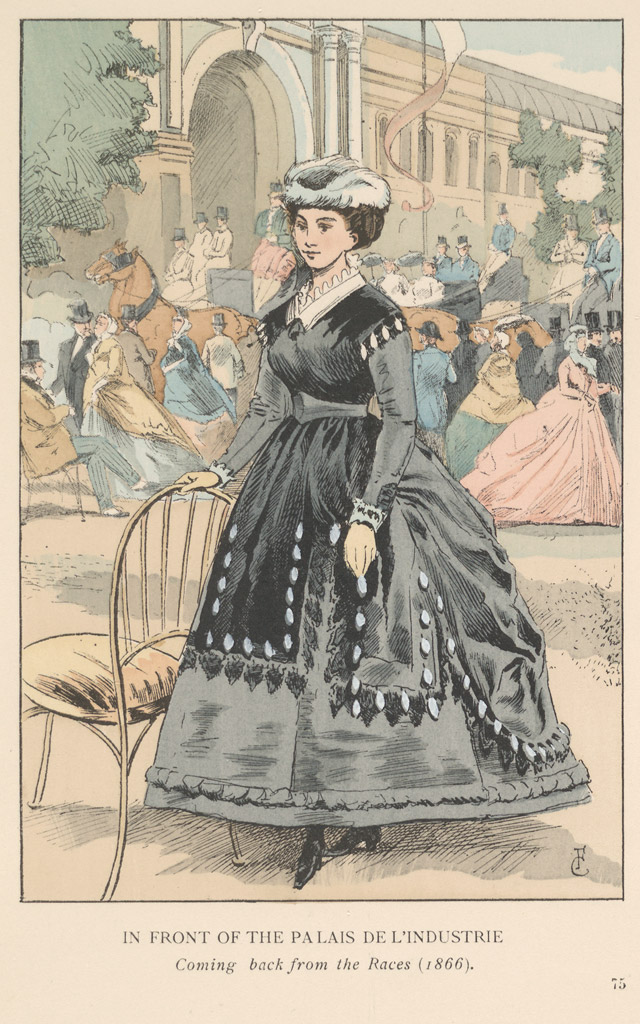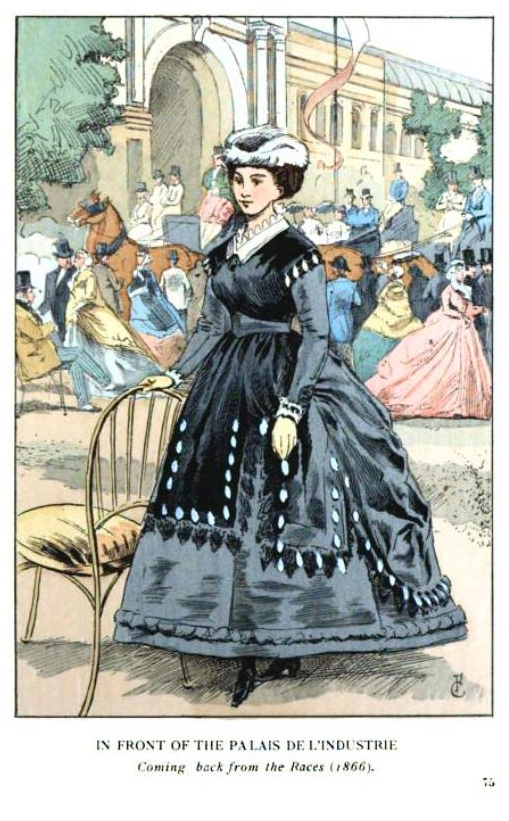Black, blue, and gray all over
March 18, 2015 by btylr | Comments Off on Black, blue, and gray all over
Last month a blue-and-black dress sparked a mass-scale debate about color theory. Even the New York Times and magazines like Wired eventually weighed in, explaining how color perception is contingent upon context and light sources.
In honor of the unexpected media attention to color theory, Curio features below a gray-and-black dress from c. 1866, reproduced from Fashion in Paris: the Various Phases of Feminine Taste and Aesthetics from 1797 to 1897 (New York: C. Scribner’s Sons, 1898) for the Library’s Paris: Capital of the 19th Century online project (the project’s items are also available via the Brown Digital Repository).
This illustration was hand-colored for Uzanne’s book, and the tones used to represent the dress were not painted as scientifically neutral-gray hues. Traditional representational painters counsel “never use black paint” when rendering scenes, since in reality even black rarely visually appears as “pure” black, depending on the particular light sources illuminating an area. Scanning or digitally photographing hand-painted artwork often only exacerbates color uncertainty, if images are captured without a known neutral-gray or neutral-white reference point. For example, the same page illustration, scanned for Google Books’ digitized version of the volume, ends up looking even more blue-cast, at least in part due to the contrast-boosting post-processing applied to Google Books’ page images:
To test your color perception, try X-Rite and Pantone’s Online Color Challenge (taking the test on a calibrated and profiled monitor definitely helps). By chance, coinciding with the media frenzy about the black dress on Tumblr, the philosopher of perception and consciousness David Chalmers — who has written about color perception — was giving a series of Royce Lectures at Brown, February 24–27.








